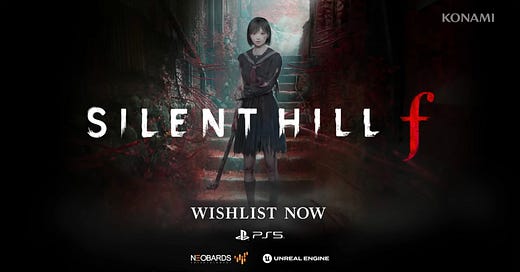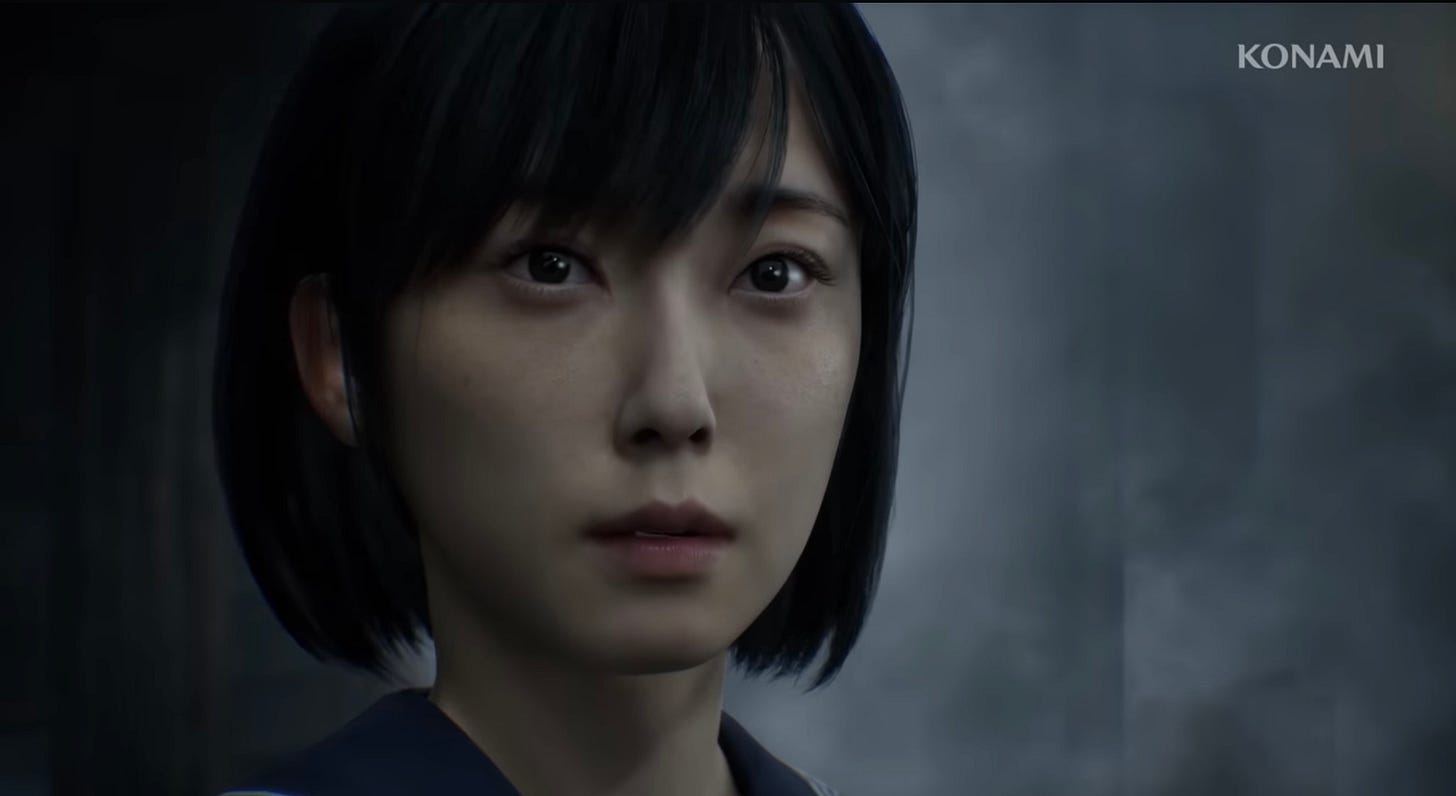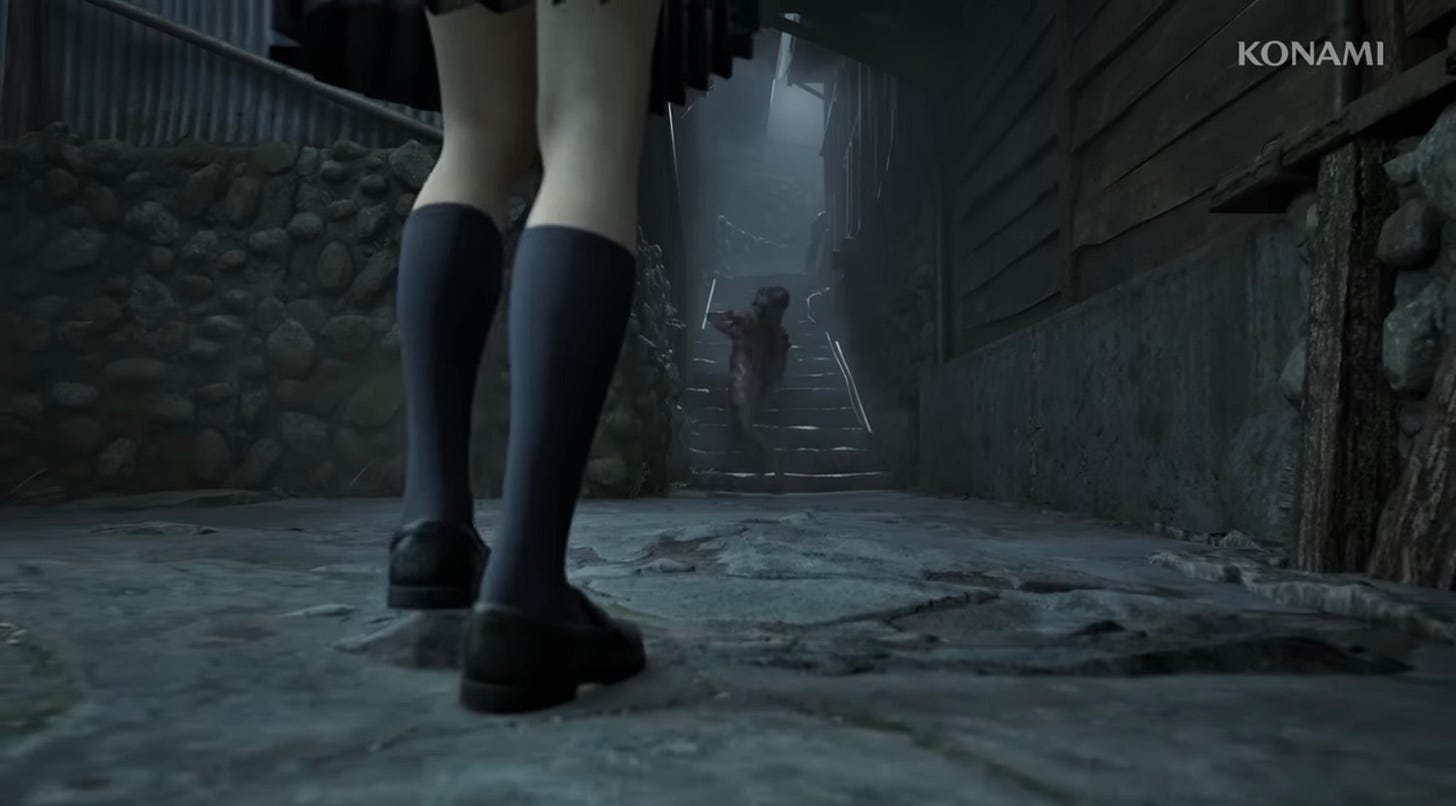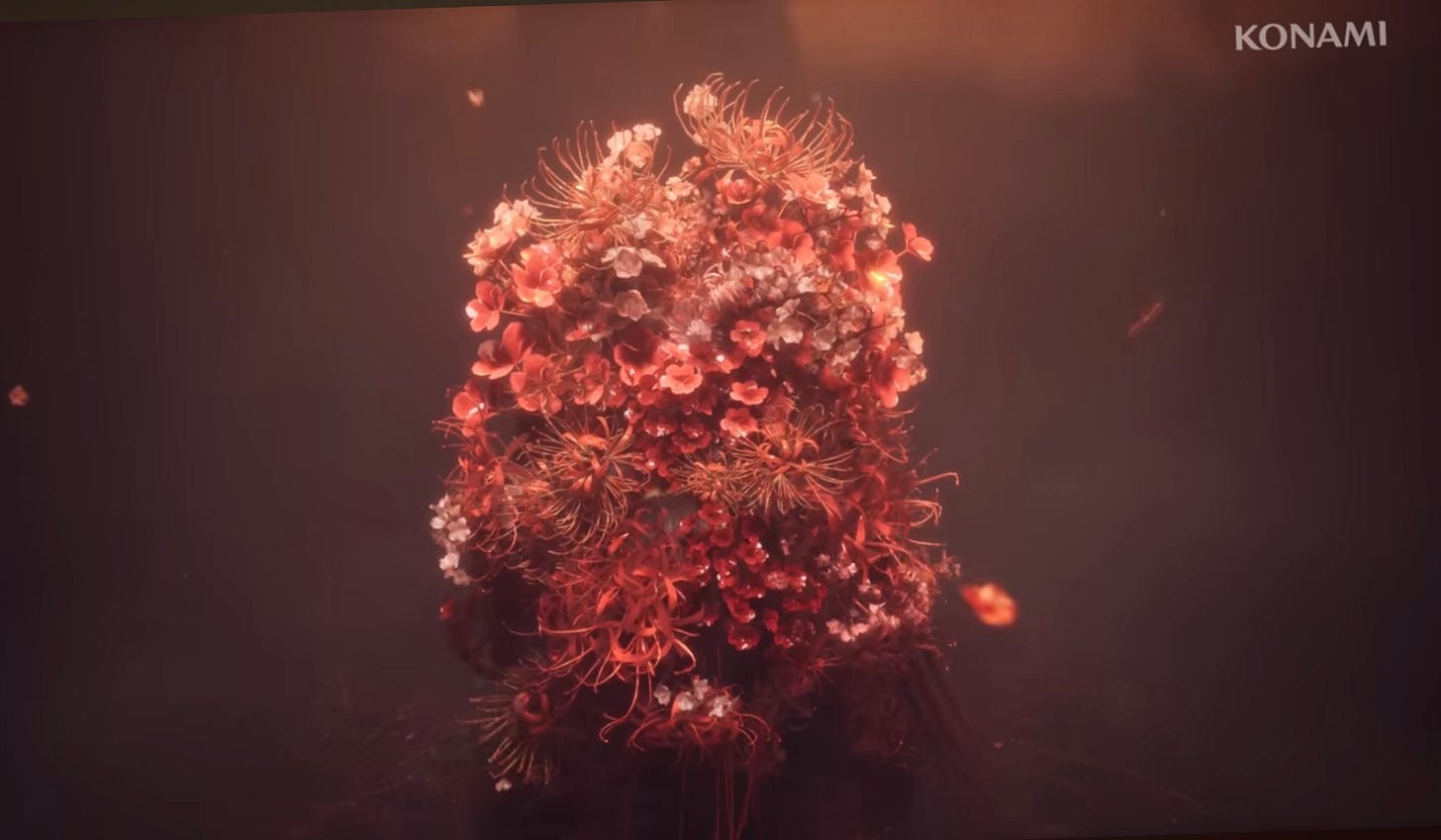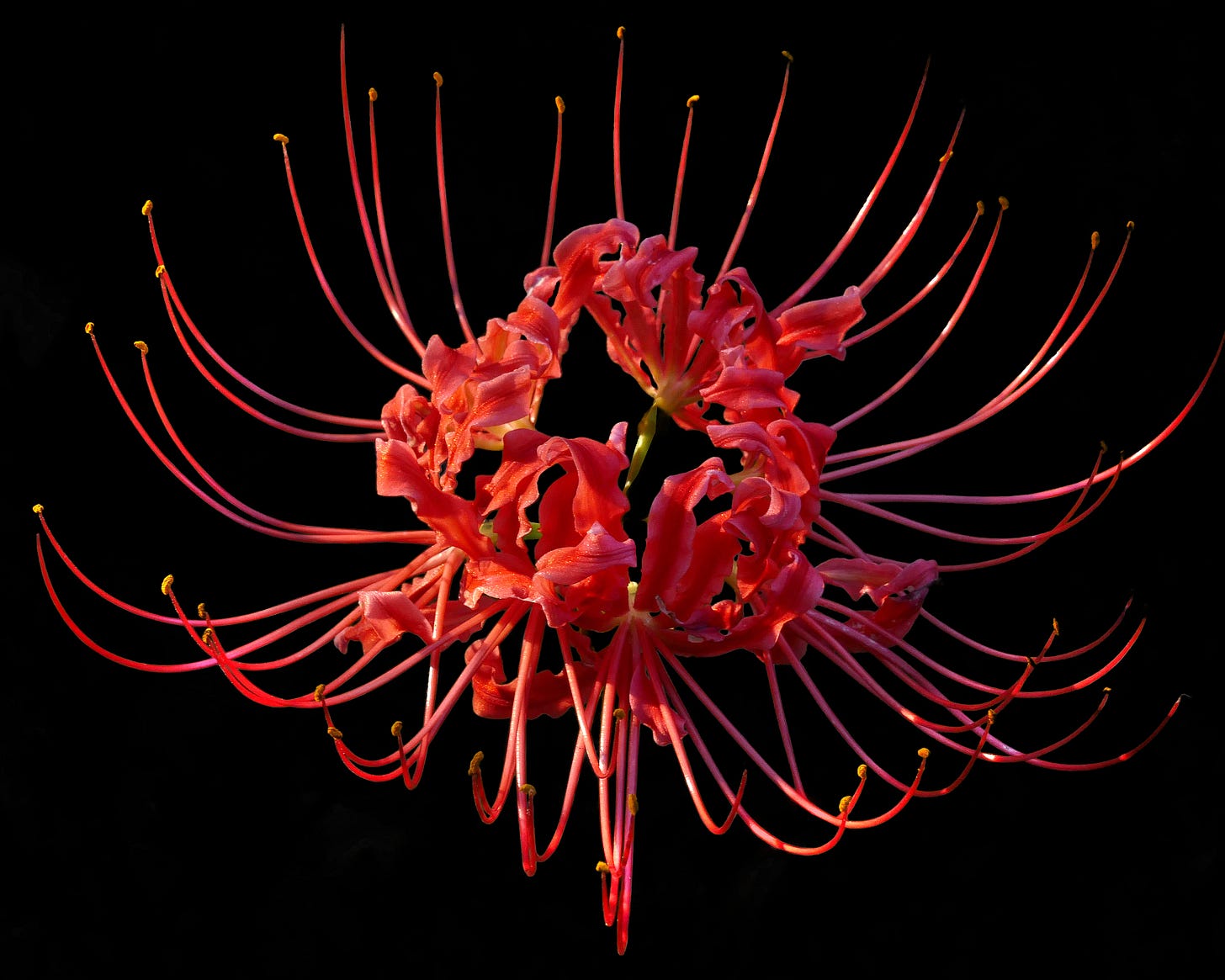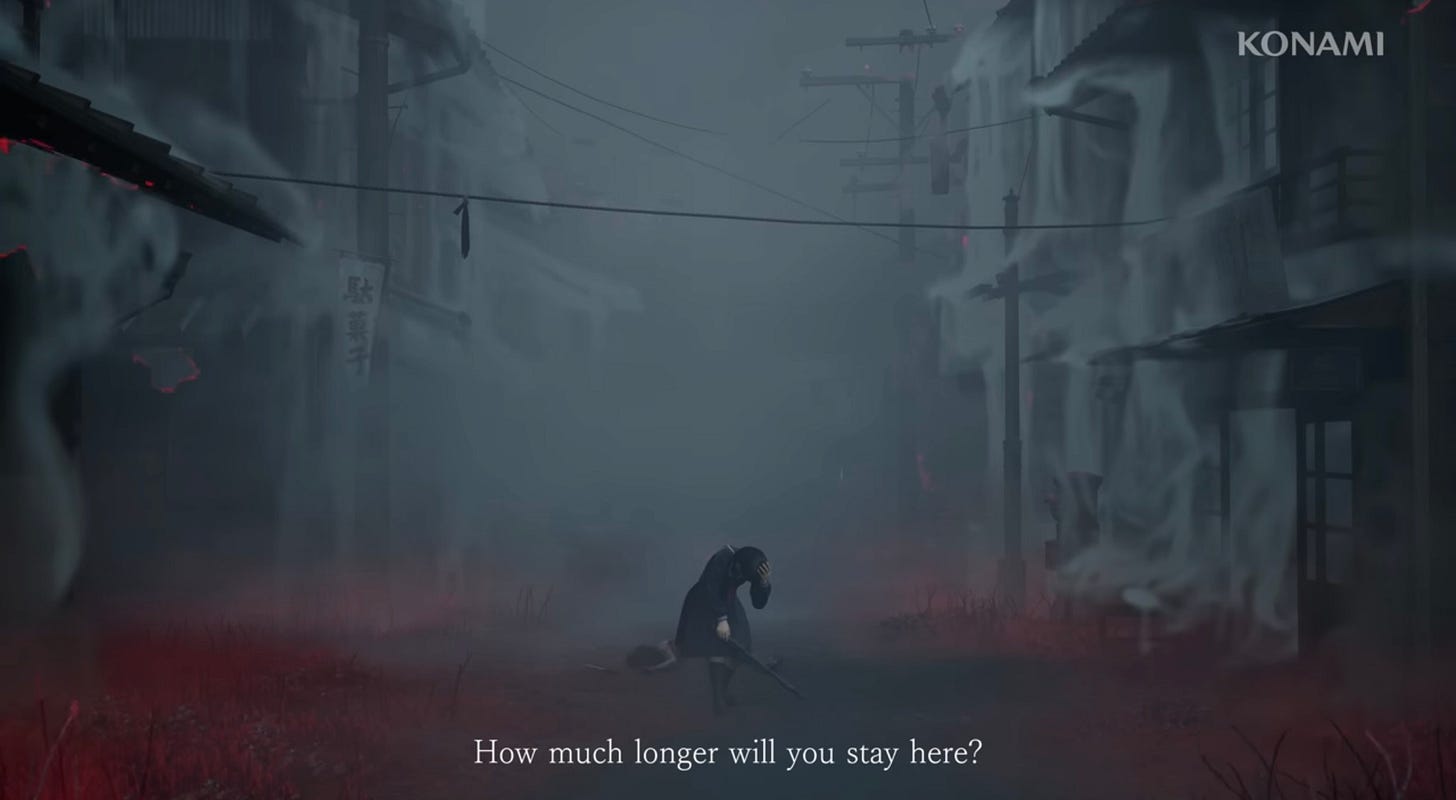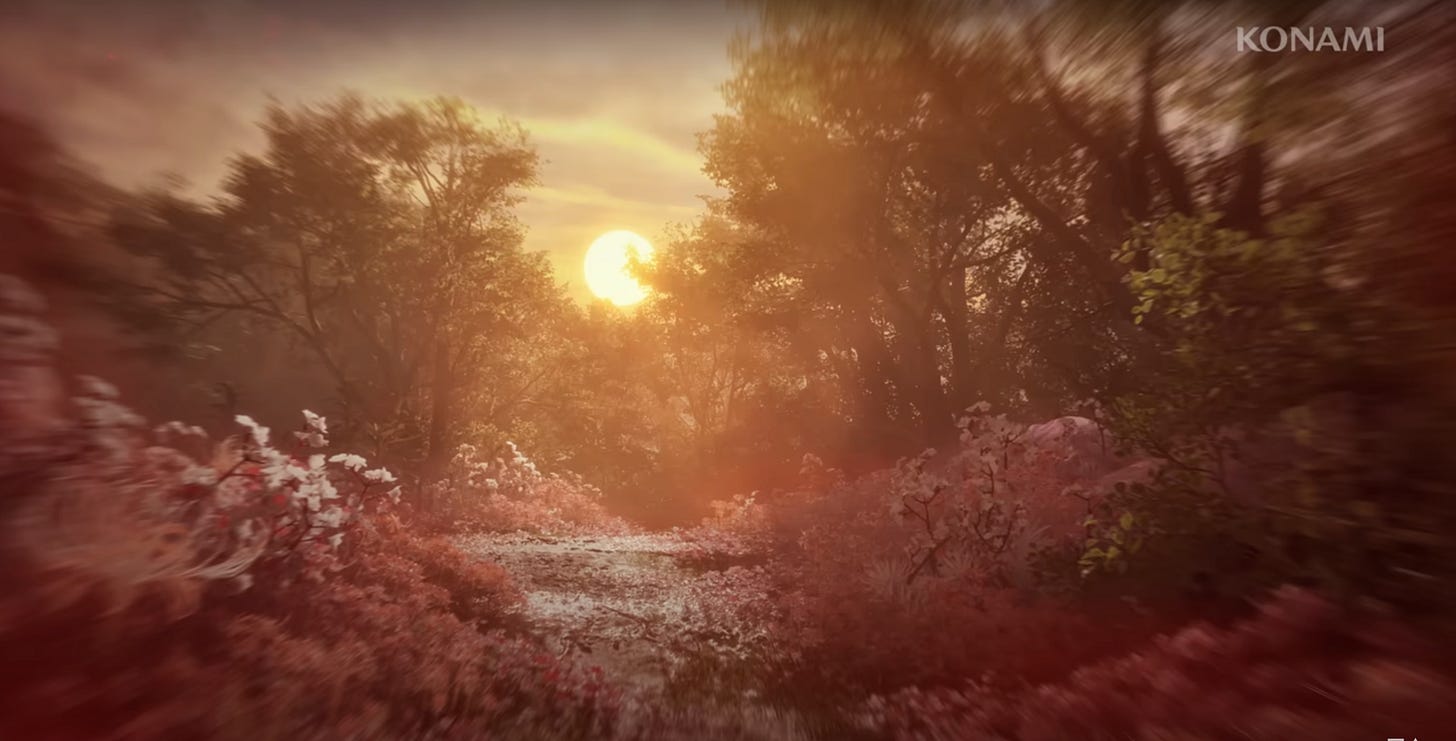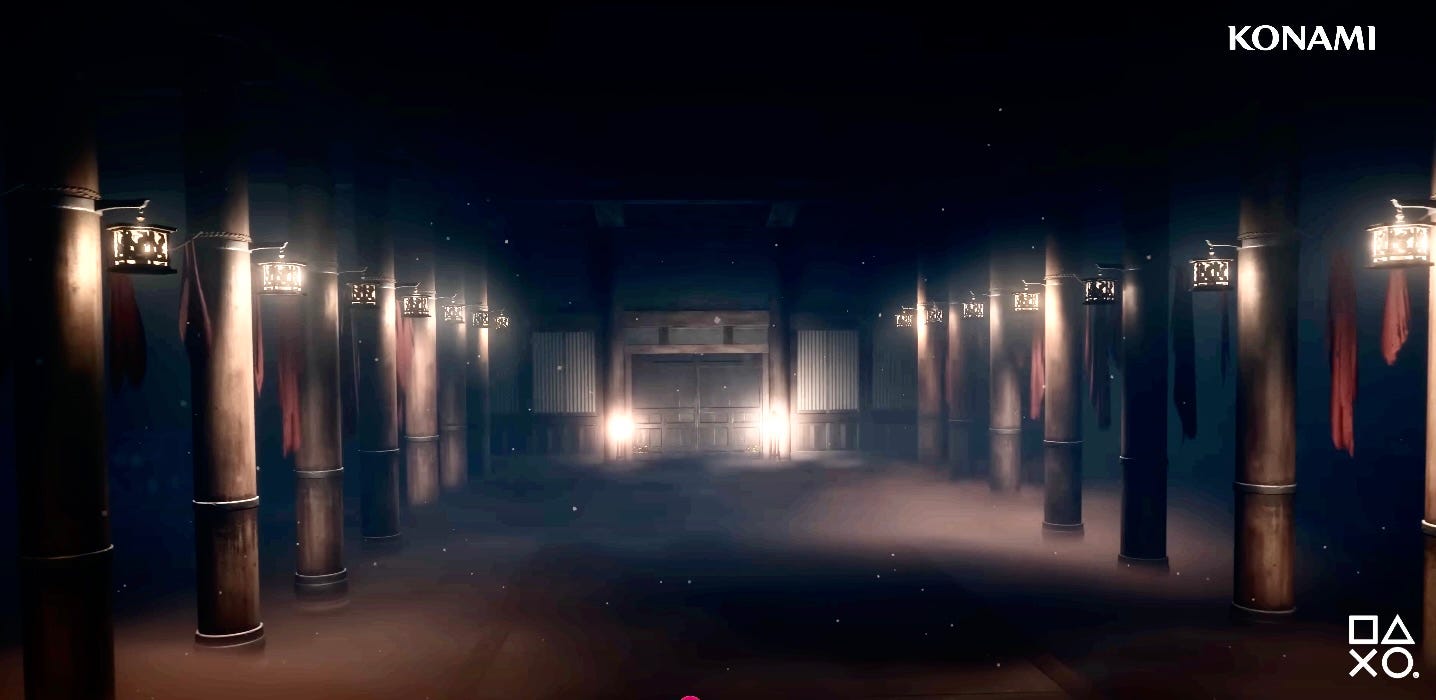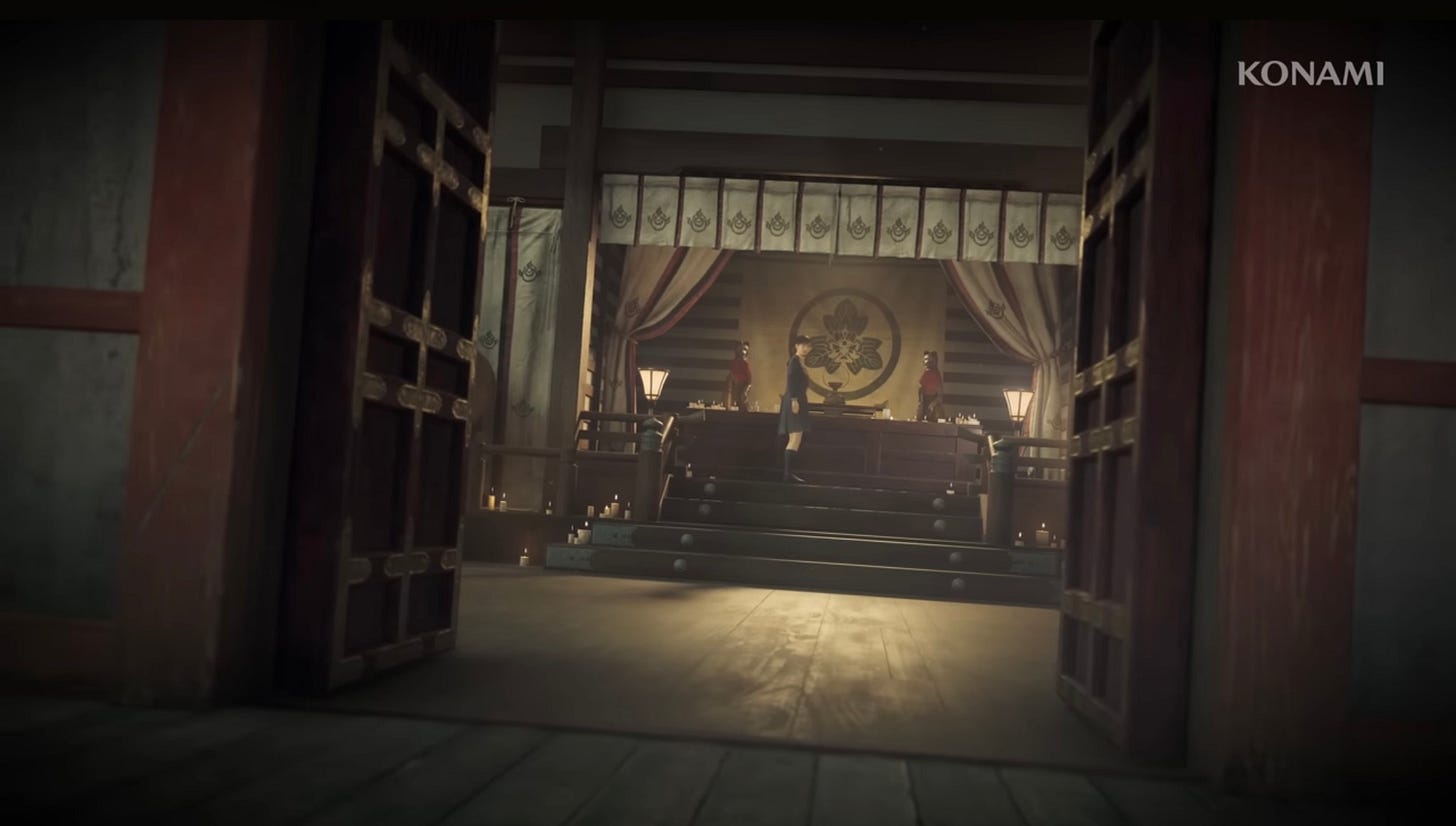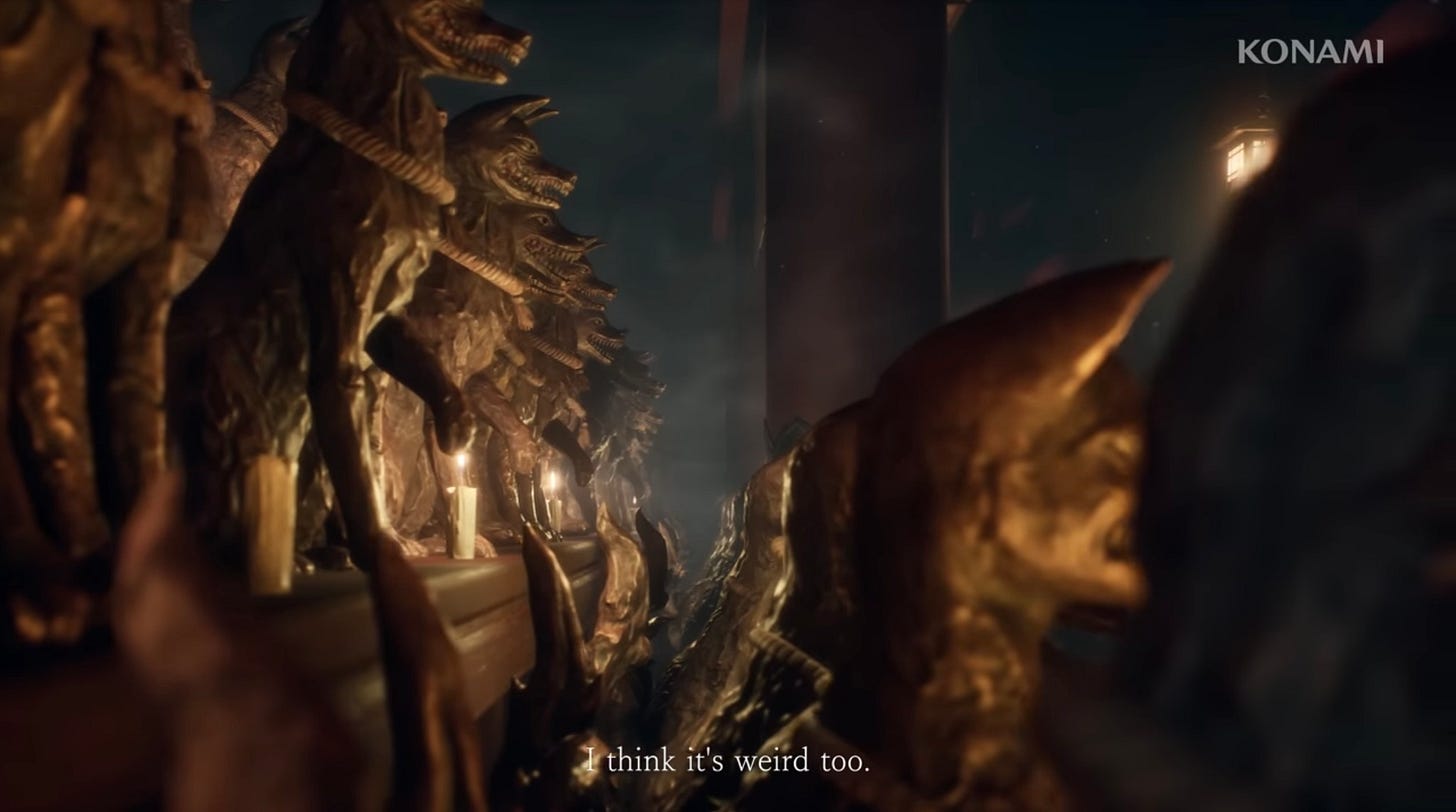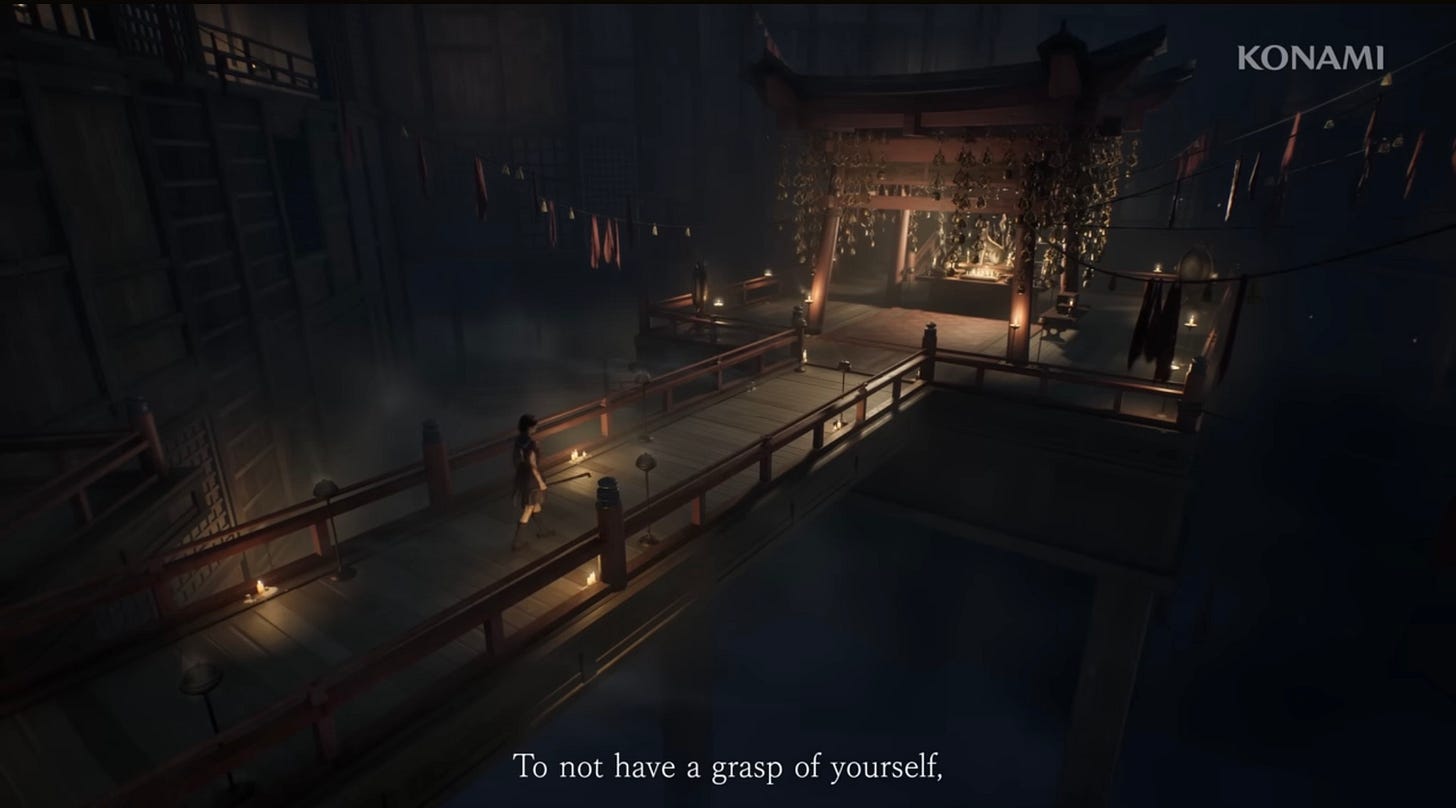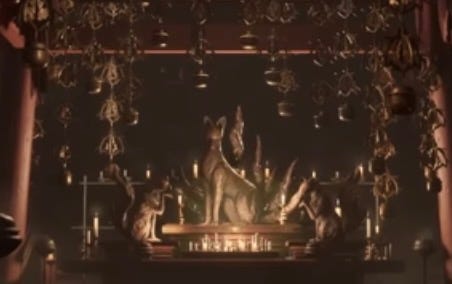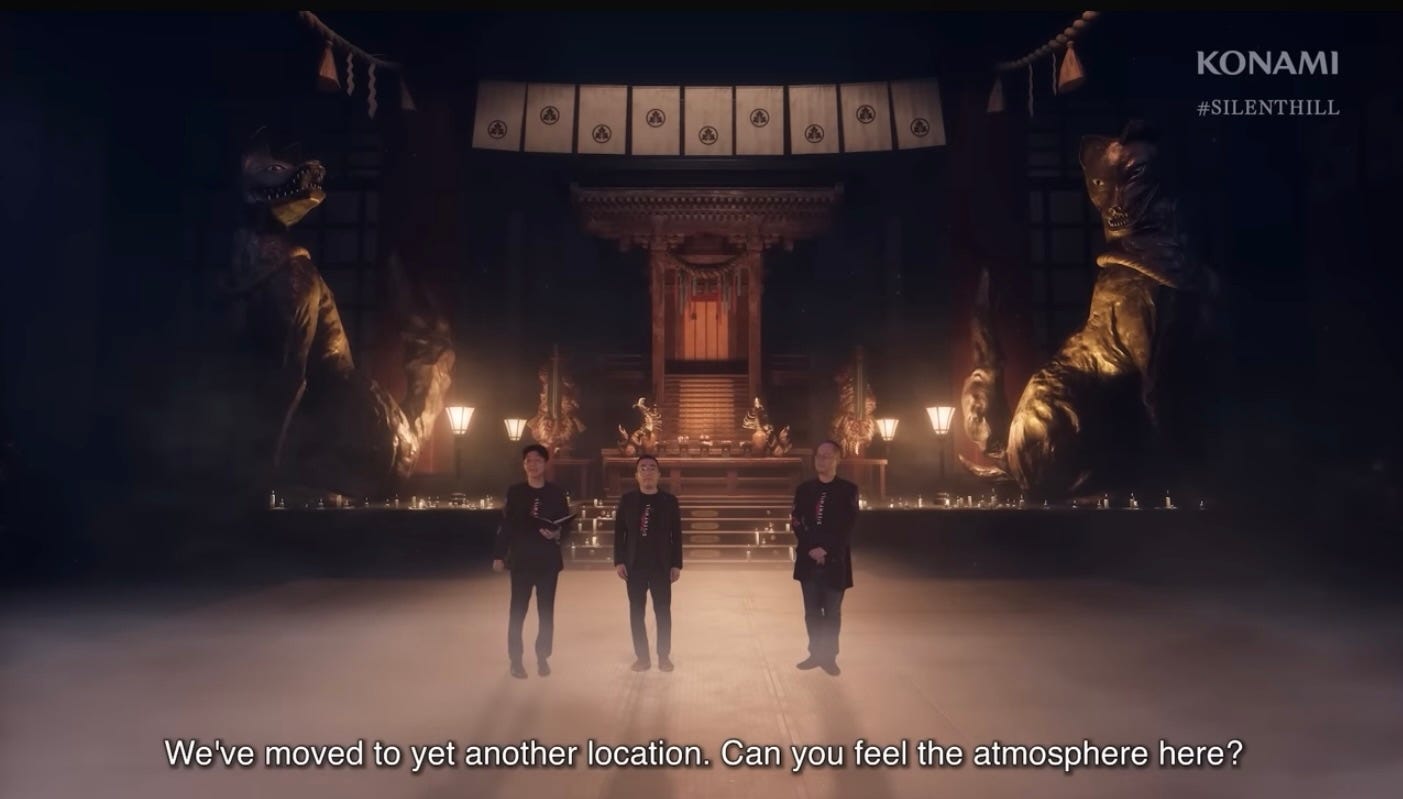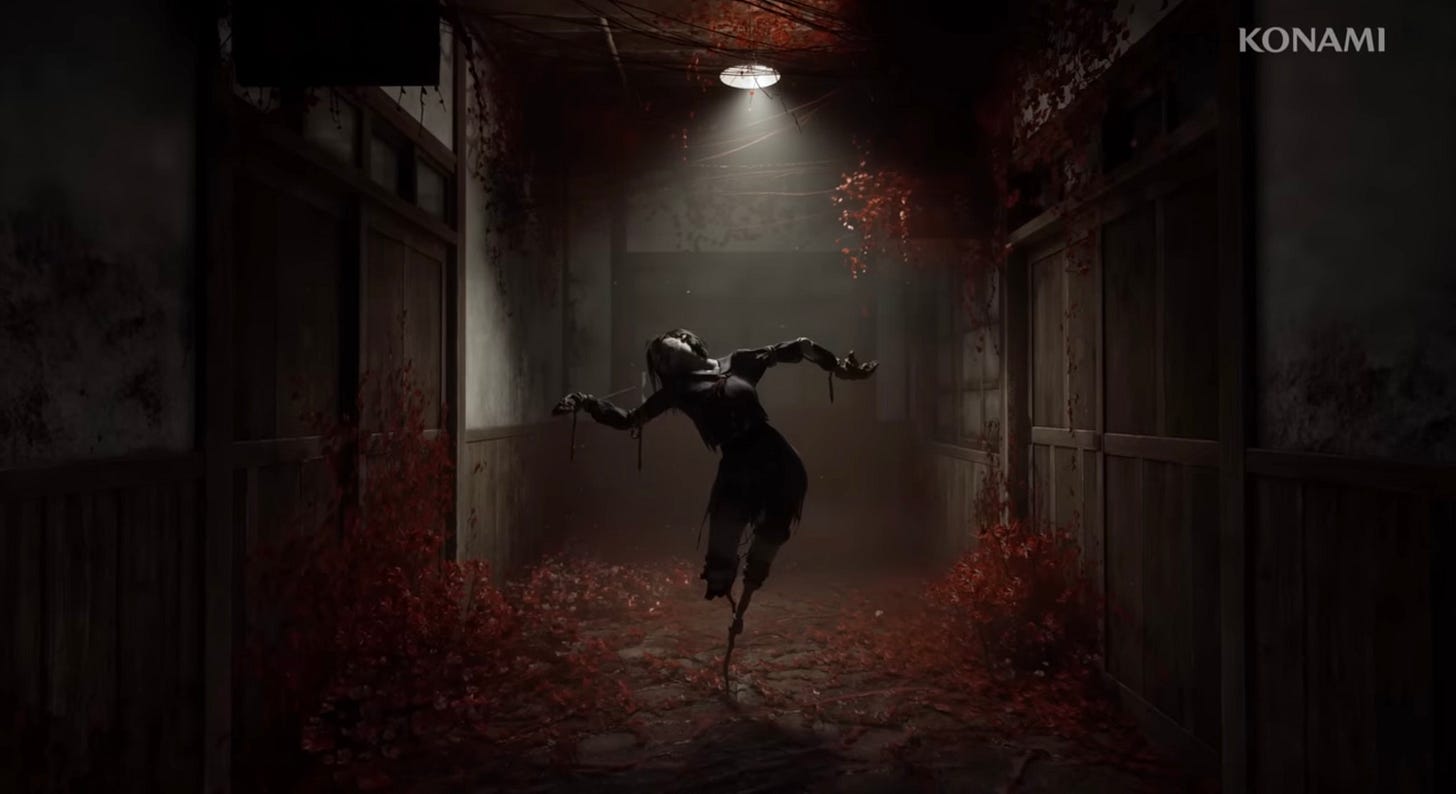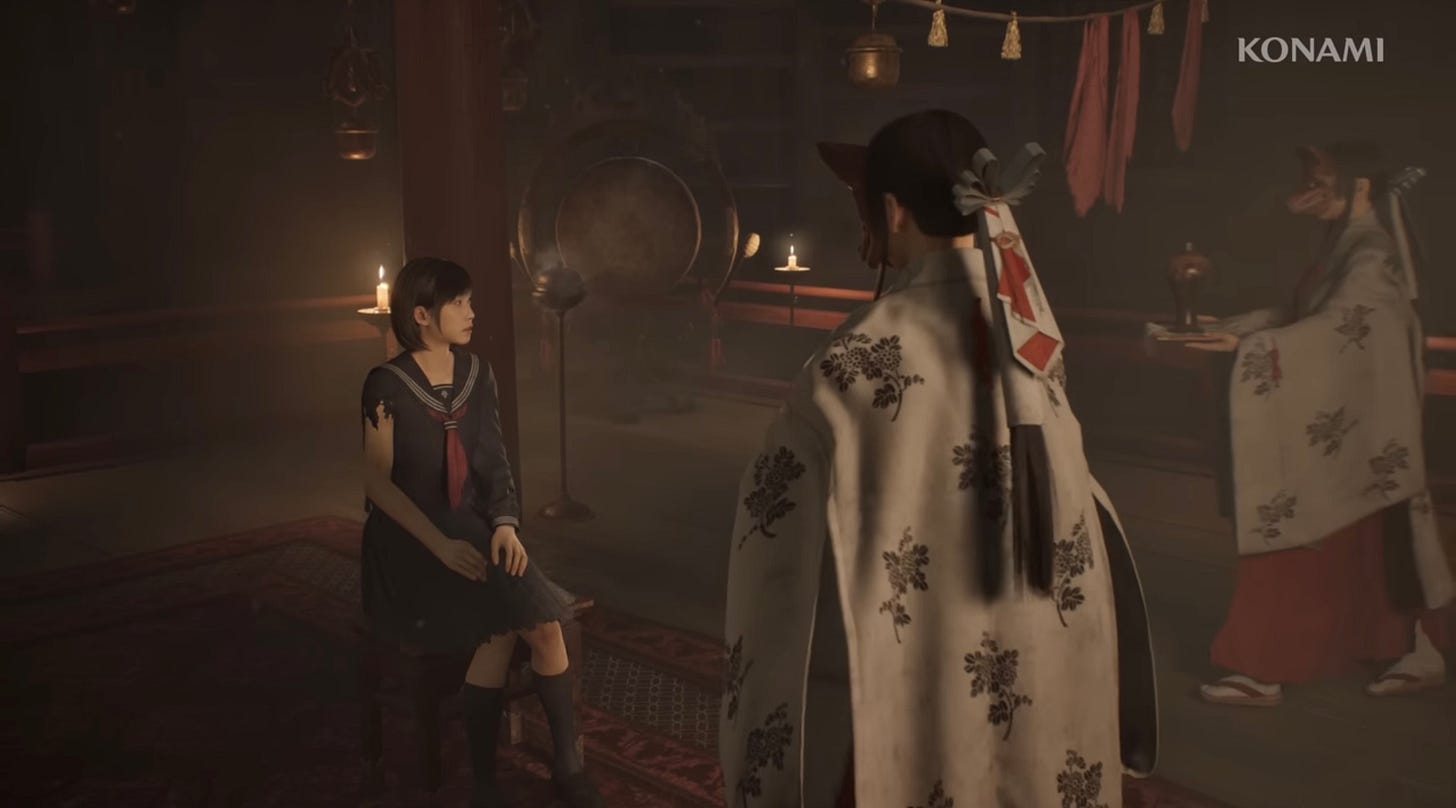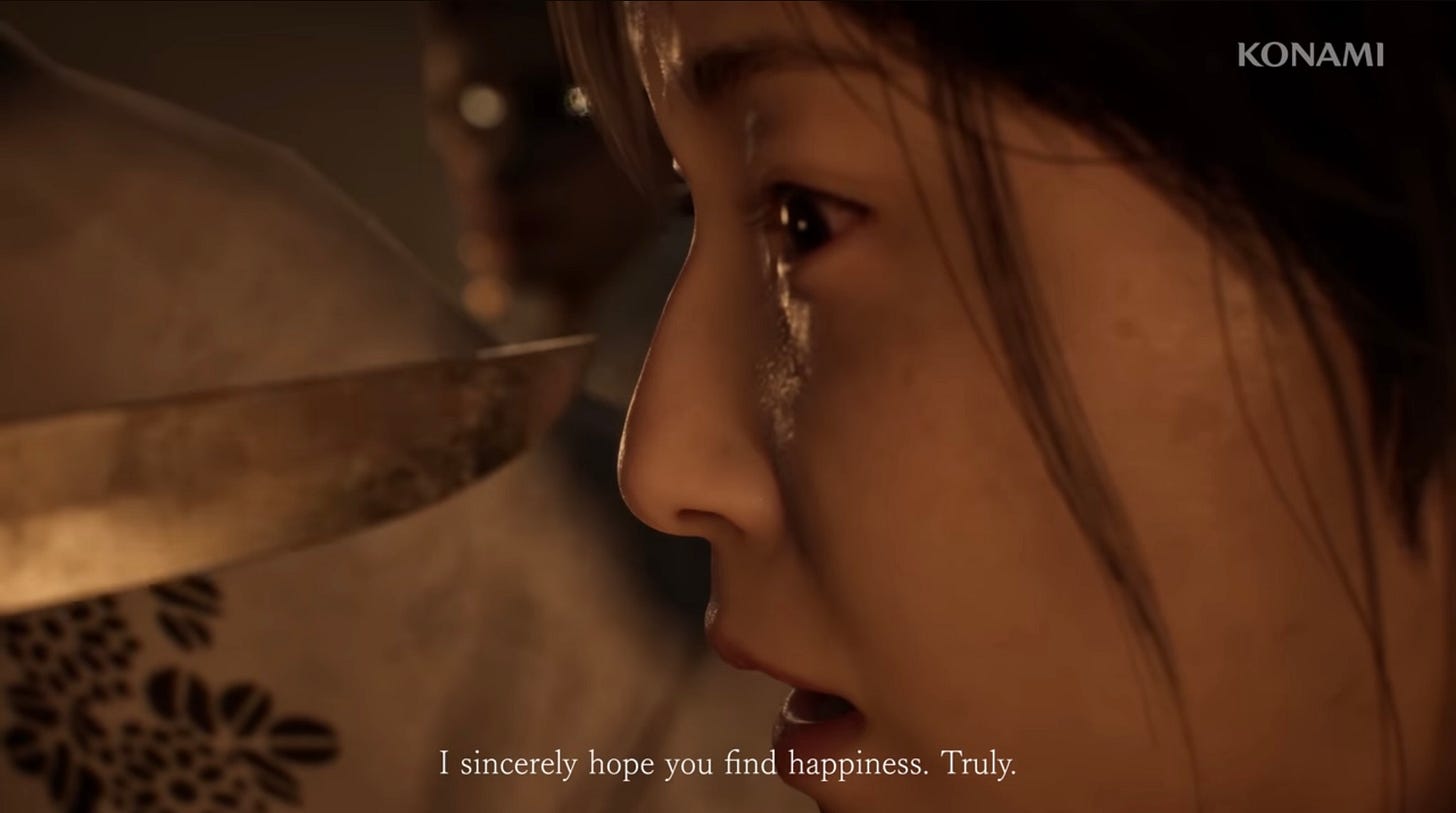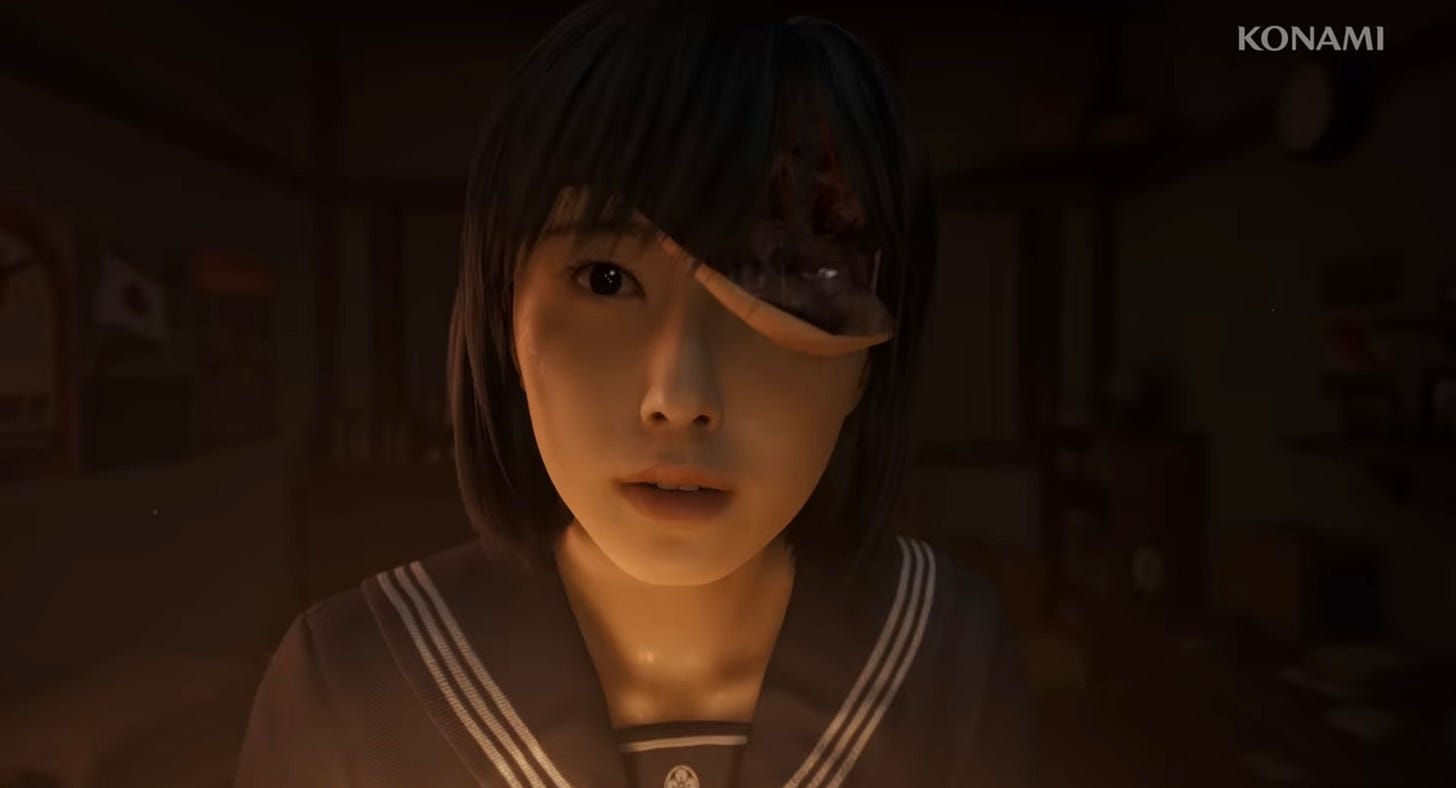Breaking Down the Religious Horror Behind 'Silent Hill f'
Let's talk foxes, fear and faces falling off...
I’m a huge Silent Hill nerd, it’s why I got my PS1 back during my uni days, to wander around a strange American town looking for a little girl named Cheryl. I loved Silent Hill 2, especially the recent remake and it’s great we finally have a new trailer for Konami’s newest project, Silent Hill f.
You can watch the teaser, released back in 2022, below:
So let’s talk about it, shall we?
The trailer was revealed as part of the Silent Hill Transmission, a Konami event where the team meet up to let fans know what’s coming from their favourite horror franchise.
This game, which doesn’t have a release date yet but will probably come out later this year (I think), is the first Silent Hill title to be set in Japan. It’s set during the 1960s with players taking on the role of Shimizu Hinako and is set in the town of Ebisugaoka, a rural town which the Transmission notes is based on Kanayama in Gifu Prefecture.
Here’s just the trailer for your viewing pleasure… We’re gonna break it down for all the interesting religious elements in a second.
I’ve been playing Assassin’s Creed: Shadows ahead of the review embargo so I’ve been in a lot of shrines this week, virtually speaking.
Let’s do this, shall we?
First up, doesn’t that torii give the game that spooky vibe? It’s actually hard to see if it’s stone or if it’s a red Inari-style torii. I might be wrong. This is my guess and will be important later. Red is going to be an important colour within this trailer, both stylistically and as the colour for the game’s logo; the f is a very specific shade of crimson which matches the spider lilies from the Teaser and the shrine we visit later on in this trailer.
The first few seconds introduce Shimizu Hinako by way of half a conversation by the speaker with a boy named Shu, who maintains Hinako is dead. Creepy right? Especially as the visual is of our protagonist herself and she’s very much alive. There are some drawings of a boy in school uniform later so it’s a good guess to say this is probably him.
Speculation: I wonder if Shu was Hinako’s boyfriend and if, maybe, one of her friends was interested. That would explain the next comment.
The voiceover is who I’m going to call The Priestess, and she’s asking Hinako if she wants to be with her friends forever, even though friends seldom last that long. They always betray you.
Wow, that’s a hard truth and super dark!
I love the character design. Hinako looks just like a teenaged Japanese girl should, with her short hair and that light in her eyes. It’s a super realistic style and as this game is 18+, we can expect gore and violence. She’s also wearing the sailor fuku which looks smart but also cements this idea that she’s a teenage schoolgirl about to fall into a world not even adults should try to walk through.
Her name is also a reference to a type of doll used during the festival of Hinamatsuri, which takes place on March 3 celebrates Girls’ Day (though it’s not a national holiday). Hina ningyō are small delicate dolls made to look like the Emperor and Empress, along with other attendants. Dolls appear in both trailers and Hinako faces several doll-inspired monsters within the new trailer too.
The fuku design is just generic enough to work and looks like it’s also going to symbolise Hinako’s ties to reality as one of the last images we see is Hinako with a large pipe, the right arm of her blouse ripped away and the back gone so it’s literally hanging onto her by threads. There’s meaning in nudity in Japanese media, it’s about vulnerability, not sexuality, and suggests Hinako is going to be pushed to her limits in this game.
And probably beyond it, too.
There’s a timeless nature to the look of the game; it could be the sixties, it could be the eighties. The town of Ebisugaoka (戎ヶ丘, えびすがおか) is timeless in its rain-slicked pathways, alleys and stone paving. The name for the town is interesting. ‘-gaoka’ means ‘on a hill’ (and the town is said to be nestled in a mountain pass; suggesting wealth from mining) but Ebisu, that’s where it gets interesting.
It’s an older kanji used in the name of a kami of fishing and one of the Seven Gods of Luck, in fact all the others are syncretic as they were adopted into Japan as auspicious but have roots in Hinduism and Buddhism. Ebisu is the only native Japanese deities in a group which otherwise serves as the patron gods of professions.
Here’s a weird thing only a geek like me remembers. One of Ebisu’s other names is Hiroku (蛭子), which is a reference to him being abandoned in a basket in the ocean. He also appears as a minor piece of lore, and has a shrine named after him, in Siren (Forbidden Siren in the West) which was directed by Toyama Keiichiro, who also directed the first Silent Hill. In that game he is a water deity associated with miscarriage as he was cast away Moses-style onto the ocean.
Oh and Ebisu also have his name to the famous beer brand too.
As a deity associated with all kinds of wealth and prosperity, it’s not surprising he lent his name to what must have once been a prosperous town.
I love the creepy vibes of the town and here we get to see our first monster, though I wonder if it’s a yōkai as there is a reference to one later in the trailer. Yōkai are Japanese monsters, the kind you will only find in folklore there and they are seriously disturbing at times, which fits in perfectly with the Silent Hill concept of horror.
BTW the story is being written by Ryukishi07 (who wrote the visual novel Higurashi: When They Cry, which is a stellar example of sound design and story telling).
So, let’s talk about the red…
Red is a very important colour in Japan. It’s auspicious and important in Shinto. It appears on the Japan flag, miko (shrine maidens) can be seen in red hakama, with red cord in their hair. It’s the colour of Inari shrines, and even has a specific shade: akane (茜), which suggests protection and the connection between humans and divinity in the form of kami.
Flowers were a major motif within the teaser trailer for the game but also reappear here. There they suggested transition, transformation and managed to be a tad creepy, especially as the trailer’s protagonist—who we now recognise as Hinako—transforms into a flower.
Flowers also carry that symbolism between girls, periods, growth into womanhood and whatnot.
But, within the trailer, there’s one particular flower we need to talk about.
Bonus Round time!
Name this flower.
Ask any anime fan what flower this is and they might not be able to name it but it’s gonna ring bells. It appears in anime a lot, especially in summer, and often appear in creepy places. Especially cemeteries. In Japan it’s got a strong association with death as a result, partly because of the shade of blood red, and also because of the frail beauty of the flower. Also it tends to bloom after rainfall and is a transient flower which seems frail but stubbornly blooms anyway.
Officially called Lycoris radiata, it’s often called the red spider lily, sometimes the corpse flower (no, not that one). In Japanese it’s the higanbana (彼岸花). It’s also got a poisonous bulb (so don’t eat it!) and often appears in anime or manga in this role as a herald of death, the afterlife and sorrows or loss.
We’re going to be seeing it a lot on Hinako’s journey though Ebisugaoka.
I think the appearance of the higanbana is this game’s version of the iconic siren which signals the shift from our world to another. It fits in with the Japanese setting and the overall aesthetic of ‘creepy as fuck’ but will also send a small twinge of terror into anyone who’s watched more than a few anime series or been to Japan in the long, hot summers.
The voiceover of the Priestess is back, asking Hinako how much longer she intends to stay here—though it appears to imply another world rather than suggesting they’re both occupying the same space.
For just a second, we get to see this beautiful and creepy scene. Note the flowing red flowers. But the real question is: Is the sun rising on a new world or setting on another one?
Now we shift to another kind of place not seen before; a sacred space.
The music has shifted to sound like Japanese instruments playing ritual music: the taiko drum, the shamisen, the eerie whine… We have what looks like red columns and this screams ‘Shinto Shrine’ to me.
I boosted the light a tad, and you can make it out a bit better:
We’ve got the red columns and tassels, the ritual lanterns and what looks like double doors to a ritual space at the end. We see the doors open a bit later on, and it is a Shinto space:
That crest is a mon, it’s usually associated with a particular clan and I’m not an expert. But I did grab a better image so if anyone recognises this or can decode it, shout! I wonder if it’s the mon of Hinako’s family but it’s not the usual mon for the Shimizu clan.
It looks like we have three leaves and what my brain wants to be the higanbana in the centre. It certainly goes with the game’s aesthetic! Also, and I could be wrong, but I think the mon is also on Hinako’s school uniform, right above the ribbon.
Either way it’s gotta be important. I’m also reminded of the Seal of Metatron from Silent Hill 2… This mon could easily be a local varient of that.
Here’s the shot of the yōkai, she looks to be a variation on the long necked woman, the Rokurokubi (ろくろ首, 轆轤首) and I am totally down to meeting her if she’s in the game!
Now we get into the Inari stuff I was hinting at earlier. These are foxes, kitsune, divine messengers of the kami (Usually Inari, the sometimes male, sometimes female rice kami).
YouTuber Shohei Kondo commented that it reminded him of Sanjūsangedo in Kyoto. This is a Buddhist temple to Kannon (which is one my favourite temples in Kyoto) known for its rows of statues of the Goddess but these are foxes so it’s an interesting twist on religious iconography.
I love this shot as it tell us so much about the area. We’ve got a bridge which suggests traveling from the world of humanity to somewhere closer to where the kami are.
There is a torii gate, a red Inari-style one, but it’s covered in crotal bells (tiny metal bells which are often held in miko’s or priest’s wands during rituals). There also look to be some amulets hanging and I can’t tell if they’re some important emblems or just there as wind chimes or set dressing.
The thing about Shinto is everything used serves a purpose so I doubt there just there to be pretty. I wonder if the noise is just a smaller version of the shrine bells you can ring when you need to get the resident kami’s attention.
Either way it’s not usual for torii to be adorned like this.
This altar doesn’t look very Shinto-like, however. A kitsune stands as the central focal point with two more on either side. It looks, also, like it has nine tails; making it the most powerful kind of kitsune. Legend says that a kitsune gains a new tail from every hundred years of life so this one is an Uber Kitsune.
The livestream also gave some different angles of an inner altar area too.
We’ve got giant kitsune on either side, in their role as guardians I think, shimane rope signifying the space as sacred and what looks like a full altar with offerings in front of it (usually salt, rice, water and sake). The main focus is on the altar which contains a sacred item like a holy mirror and the shimane (the rope and paper hanging above it) signifies the sacredness. There also looks to be a blind which will hide the sacred relic from sight.
This side shot shows another torii gate, this one covered in paper amulets, as well as some of the fox statues. Honestly, I really like that they did their so that when the camera angle changed, so did the background’s perspective.
Candles aren’t usually positioned so haphazardly like that which suggests they’re more aesthetic than anything else.
Spooky…
Now this shot might not give away much but I just like the composition.
After some shots which help with the worldbuilding of the game, including a chalkboard which has some entreaties the reader to ‘run away or you’ll never be able to go back’. We get to the final shots in which Hinako, arm of her fuku missing, sits within a shrine and is attended by women dressed as miko with kitsune masks.
Priests don’t usually wear masks within Shinto ritual, neither do miko. There is the Bon Odori, a ritual dance performed during the August holiday of Obon (which focuses on the dead and is a popular time to tell scary stories to help deal with the heat). The masks are more a thing in Noh and traditional theatre but it could be that these priestesses are wearing masks to mark them as servants of whatever kitsune kami they worship.
One of them is The Priestess but both wear red hakama, formal Shinto robes, their hair bound with red and white paper. You can see the one of the right carrying a container. That looks like an oversized sake bottle
White is the other important colour in Shinto; it’s all about purity. In fact Shinto is all about purity and impurity: harae and kagare. And this is the part where stuff gets weird because it looks like that bottle is going to contain something in the very near future, something from Hinako.
Shinto doesn’t do blood-letting and in the next shot I thought The Priestess was going to cut out Hinako’s eye. That would never happen in an actual Shinto ritual but the knife could be a ceremonial way to cut something from Hinako or to draw a line between her and somewhere else, like the flower-filled Otherworld she’s been finding herself in.
EDIT: I missed this but there is also a priest whom the two shrine maidens appear to be assisting; they have white hair and are literally in it for a heartbeat.
The line suggests a sense of finality and that Hinako has probably asked for this. Then we have the final, awesome shot of the trailer in which Hinako’s face begins to peel off…
Obviously, it’s early days and we’ve got a way to go but this is exciting. Japan-set horror, like Project Zero/Fatal Frame and Siren, are my absolutely favourite kinds of horror games.
Most of these games, however, use the Japanese religious angle as an aesthetic, as a way to make the horror more horrifying, rather than taking Shinto or the Japanese form of Buddhism and using reality.
Project Zero, especially, had horrific rituals which are all about pain, torture and one person suffering terribly to protect the wider world from some otherworldly calamity. That’s about as far from Shinto as we can get. However Silent Hill always has a strong religious backbone, even if it’s about cults and dark god so I’m curious if this kitsune-worshipping religion has some connection to the Order or if it’s a Japanese take on the idea of a heretical religious group who believe their own variation of accepted doctrine.
So I’m curious about the elements the game will take and how the developers will weave new meaning into the story, the world and why foxes are so important. I totally plan to get the game to review and revel in so I’ll keep you all updated as and when! It’s great to have a new entry in the series and even better to visit a new and terrifying version of Japan!

